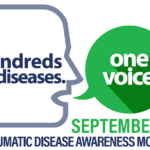
We’ve all likely traveled with someone who repeatedly asks, “Are we there yet?” Perhaps we’ve even been the person posing the question. It is usually a question rooted in sheer excitement for what the end destination holds, and it is a question that is often met with the answer, “Not yet, but we are getting closer.”
Ever since the ACR announced its inaugural public relations (PR) campaign, there has been a growing sense of excitement among members and leadership. There have been questions about how we will reach our PR goals and objectives, creative bumper sticker slogans shared on the list serves, and conversations about how we will get this effort to the finish line.
The launch of this campaign will be a truly monumental moment for the ACR and for the specialty as a whole because it will help us start to define ourselves, share our work, and—frankly—toot our own horns a bit.
Knowing what a PR campaign can do for our specialty can certainly lead to the kind of excitement that causes us to ask if we are there yet. But to get “there,” we have many steps to take: focusing to establish a starting point; preparing for a marathon, not a sprint; and establishing the willingness to keep going.
Our Starting Point
When the ACR began looking into goals, objectives, and potential audiences for this campaign, there were a number of options to explore. Should we focus on one disease? Should we focus on the general public and patients? Should we establish a presence for ourselves “inside the Beltway,” as the political environment in Washington, D.C., is commonly called?
With so many options, it quickly became clear that establishing one PR campaign that is everything to everyone is not only impossible for rheumatology, but impossible for just about any group. Successful PR campaigns are focused, and our campaign needs to be as well.
Through member research, we established our necessary starting point: educating the people and groups that make decisions affecting rheumatology—we call them influencers. We specifically identified lawmakers, administration officials, referring physicians, and advocacy groups as the influencers that should be targeted in the first phase of the campaign. However, the need for focus doesn’t stop with the audience; it carries over into the campaign’s goal and objectives: advancing rheumatology by elevating the importance of the specialty, increasing the understanding of the work of rheumatologists, and laying a foundation of awareness and understanding that creates more favorable public policy.
